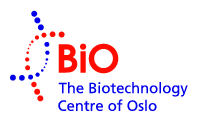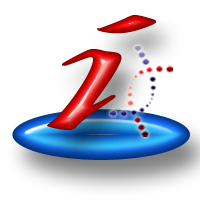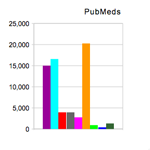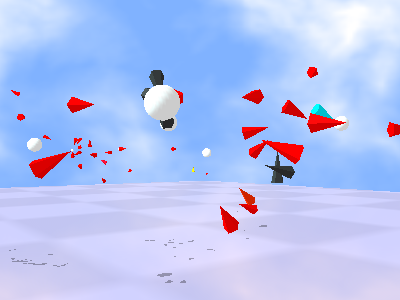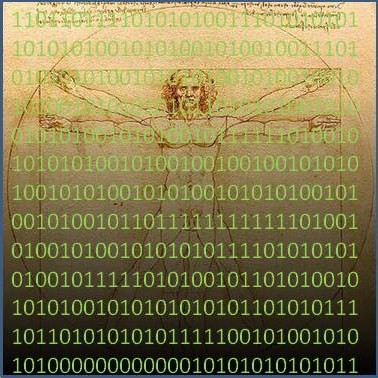Difference between revisions of "Donaldson Group"
PaulBoddie (talk | contribs) (Tidied the content. Updated the Bioseminar details.) |
|||
| Line 15: | Line 15: | ||
Our recent work on a consolidated protein interaction database can be found at http://irefindex.uio.no/ . | Our recent work on a consolidated protein interaction database can be found at http://irefindex.uio.no/ . | ||
| − | |||
== Projects == | == Projects == | ||
| − | + | {|class="wikitable" style="text-align:left; border-top: 5px solid #0000eb; border-bottom: 5px solid #0000eb" border="0" cellpadding="10" | |
| − | {|class="wikitable" style="text-align:left" border="0" cellpadding="10" | ||
| − | |||
| − | |||
| − | |||
| − | |||
|<imagemap> | |<imagemap> | ||
Image:iRefIndex_logo.png|100x100px | Image:iRefIndex_logo.png|100x100px | ||
default [[iRefIndex]] | default [[iRefIndex]] | ||
| − | </imagemap> | + | </imagemap> |
| + | | [[iRefIndex|'''iRefIndex''']] [[iRefIndex|http://irefindex.uio.no/]]<br/> iRefIndex (interaction Reference Index) provides an index of protein interactions available in a number of primary interaction databases including BIND, BioGRID, CORUM, DIP, HPRD, IntAct, MINT, MPact, MPPI and OPHID. This index allows the user to search for a protein and retrieve a non-redundant list of interactors for that protein. | ||
iRefIndex uses the Sequence Global Unique Identifier (SEGUID) to group proteins and interactions into redundant groups. This method allows users to integrate their own data with the iRefIndex in a way that ensures proteins with the exact same sequence will be represented only once. | iRefIndex uses the Sequence Global Unique Identifier (SEGUID) to group proteins and interactions into redundant groups. This method allows users to integrate their own data with the iRefIndex in a way that ensures proteins with the exact same sequence will be represented only once. | ||
| Line 35: | Line 30: | ||
Image:IrefWeb.png|100x100px | Image:IrefWeb.png|100x100px | ||
default [http://wodaklab.org/iRefWeb/] | default [http://wodaklab.org/iRefWeb/] | ||
| − | </imagemap> | + | </imagemap> |
| + | | [http://wodaklab.org/iRefWeb/ '''iRefWeb'''] [http://wodaklab.org/iRefWeb/ http://wodaklab.org/iRefWeb/]<br/> iRefWeb provides a searchable web interface to the iRefIndex. iRefWeb also provides visualization of statistics related to iRefIndex and allows users to compare annotation of the same publication by multiple interaction databases. | ||
iRefWeb is a collaborative project with the [http://wodaklab.org/ws/ Wodak group] at the Hospital for Sick Children in Toronto. | iRefWeb is a collaborative project with the [http://wodaklab.org/ws/ Wodak group] at the Hospital for Sick Children in Toronto. | ||
| Line 42: | Line 38: | ||
Image:Magrathea_logo.png|100x100px | Image:Magrathea_logo.png|100x100px | ||
default [[Magrathea]] | default [[Magrathea]] | ||
| − | </imagemap> | + | </imagemap> |
| + | | [[Magrathea|'''Magrathea''']] [[Magrathea|http://magrathea.uio.no/]]<br/> Magrathea is prototype software demostrating the principals of coordinated agent modeling. | ||
|- | |- | ||
|<imagemap> | |<imagemap> | ||
Image:ancientlibraryalex.jpg|100x100px | Image:ancientlibraryalex.jpg|100x100px | ||
default [[The Biolibrarian Proposal]] | default [[The Biolibrarian Proposal]] | ||
| − | </imagemap> | + | </imagemap> |
| + | | [[The Biolibrarian Proposal|'''The Biolibrarian Proposal''']] | ||
The Biolibrarian proposal proposes the creation of new positions at university libraries around the world. | The Biolibrarian proposal proposes the creation of new positions at university libraries around the world. | ||
| Line 55: | Line 53: | ||
Image:Vitruvian_man.jpg|100x150px | Image:Vitruvian_man.jpg|100x150px | ||
default [[DiG:_Disease_groups]] | default [[DiG:_Disease_groups]] | ||
| − | </imagemap> | + | </imagemap> |
| + | | [[DiG:_Disease_groups|'''DiG: Disease Groups''']] [[DiG:_Disease_groups|http://donaldson.uio.no/wiki/DiG:_Disease_groups]]<br/> The Disease Groups project groups together phenotypically related disease-gene associations found in OMIM's Morbid Map. The resulting map of disease genes may be used to explore relationships between disease genes in the human protein-interactome. | ||
|- | |- | ||
|<imagemap> | |<imagemap> | ||
Image:Bioscape_logo.gif|140x140px | Image:Bioscape_logo.gif|140x140px | ||
default [[Bioscape]] | default [[Bioscape]] | ||
| − | </imagemap> | + | </imagemap> |
| − | + | | [[Bioscape|'''Bioscape''']] http://bioscape.uio.no/<br/> Bioscape is our in-house text-mining system used to locate gene and protein mentions in PubMed abstracts. | |
| − | |||
| − | |||
|} | |} | ||
| Line 79: | Line 76: | ||
==Local Seminar Series== | ==Local Seminar Series== | ||
| − | The Biotechnology Centre of Oslo holds a weekly [[Bioseminar|Bioseminar]] on Tuesdays at | + | The Biotechnology Centre of Oslo holds a weekly [[Bioseminar|Bioseminar]] on Tuesdays at 12pm in meeting room 4 (in the ground floor area by the centre's offices and laboratories) at Forskningsparken, Gaustadalléen 21 (see map [http://www.gulesider.no/kart/map.c?q=Gaustadalleen+21&imgt=MAP&id=a_173374 here]). |
| − | Gaustadalléen 21 (see map [http://www.gulesider.no/kart/map.c?q=Gaustadalleen+21&imgt=MAP&id=a_173374 here]). | ||
The [http://www.bioinformatikk.no/seminars.html Bioinformatics Seminars] are held every Wednesday at 11:00 by the Joint Centre for Bioinformatics in Oslo, located at Gaustadalléen 25 (see map [http://www.gulesider.no/kart/map.c?id=a_173378&q=Gaustadalleen+25 here]). | The [http://www.bioinformatikk.no/seminars.html Bioinformatics Seminars] are held every Wednesday at 11:00 by the Joint Centre for Bioinformatics in Oslo, located at Gaustadalléen 25 (see map [http://www.gulesider.no/kart/map.c?id=a_173378&q=Gaustadalleen+25 here]). | ||
| Line 86: | Line 82: | ||
==Courses== | ==Courses== | ||
| − | {|class="wikitable" style="text-align:left" border="0" cellpadding="10" | + | {|class="wikitable" style="text-align:left; border-top: 5px solid #0000eb; border-bottom: 5px solid #0000eb" border="0" cellpadding="10" |
|- | |- | ||
|<imagemap> | |<imagemap> | ||
| Line 96: | Line 92: | ||
|- | |- | ||
|} | |} | ||
| − | |||
| − | |||
| − | |||
| − | |||
Introductory Perl is taught by Antonio Mora and Ian Donaldson as part of the [http://www.uio.no/studier/emner/matnat/molbio/MBV3070/ MBV3070] course. The slides for these lectures are available here at [[MBV3070 | Perl lectures for MBV3070 ]] | Introductory Perl is taught by Antonio Mora and Ian Donaldson as part of the [http://www.uio.no/studier/emner/matnat/molbio/MBV3070/ MBV3070] course. The slides for these lectures are available here at [[MBV3070 | Perl lectures for MBV3070 ]] | ||
| − | |||
<!--Antonio Mora and Ian Donaldson also hold the "Applied readings in mathematics, computer science and biology" course every second Autumn term. See [http://www.uio.no/studier/emner/matnat/molbio/MBV-INF4410/ MBV-INF4410]. | <!--Antonio Mora and Ian Donaldson also hold the "Applied readings in mathematics, computer science and biology" course every second Autumn term. See [http://www.uio.no/studier/emner/matnat/molbio/MBV-INF4410/ MBV-INF4410]. | ||
Revision as of 11:59, 30 June 2010
The Donaldson Group at the Biotechnology Centre of Oslo
Research Interests
Our primary interests include protein interaction data consolidation, text mining and data mining especially with respect to diseases.
Our recent work on a consolidated protein interaction database can be found at http://irefindex.uio.no/ .
Projects
| iRefIndex http://irefindex.uio.no/ iRefIndex (interaction Reference Index) provides an index of protein interactions available in a number of primary interaction databases including BIND, BioGRID, CORUM, DIP, HPRD, IntAct, MINT, MPact, MPPI and OPHID. This index allows the user to search for a protein and retrieve a non-redundant list of interactors for that protein. iRefIndex uses the Sequence Global Unique Identifier (SEGUID) to group proteins and interactions into redundant groups. This method allows users to integrate their own data with the iRefIndex in a way that ensures proteins with the exact same sequence will be represented only once. | |
| iRefWeb http://wodaklab.org/iRefWeb/ iRefWeb provides a searchable web interface to the iRefIndex. iRefWeb also provides visualization of statistics related to iRefIndex and allows users to compare annotation of the same publication by multiple interaction databases. iRefWeb is a collaborative project with the Wodak group at the Hospital for Sick Children in Toronto. | |
| Magrathea http://magrathea.uio.no/ Magrathea is prototype software demostrating the principals of coordinated agent modeling. | |
| The Biolibrarian Proposal
The Biolibrarian proposal proposes the creation of new positions at university libraries around the world. These people would act as local biocurators that help local university researchers submit data to relevant biological databases. | |
| DiG: Disease Groups http://donaldson.uio.no/wiki/DiG:_Disease_groups The Disease Groups project groups together phenotypically related disease-gene associations found in OMIM's Morbid Map. The resulting map of disease genes may be used to explore relationships between disease genes in the human protein-interactome. | |
| Bioscape http://bioscape.uio.no/ Bioscape is our in-house text-mining system used to locate gene and protein mentions in PubMed abstracts. |
Group Members
- Ian Donaldson
- Paul Boddie
- Sabry Razick
- Antonio Mora
Past Group Members
- Katerina Michalickova
- Hanna Nemchenko
Local Seminar Series
The Biotechnology Centre of Oslo holds a weekly Bioseminar on Tuesdays at 12pm in meeting room 4 (in the ground floor area by the centre's offices and laboratories) at Forskningsparken, Gaustadalléen 21 (see map here).
The Bioinformatics Seminars are held every Wednesday at 11:00 by the Joint Centre for Bioinformatics in Oslo, located at Gaustadalléen 25 (see map here).
Courses
| Bioinformatics for molecular biology
A new, two-week, intensive bioinformatics course that covers various aspects of bioinformatics analyses for molecular biology. Statistics, multiple hypothesis testing, microarray analysis, sequence alignments, working with protein structures, protein interaction networks and more. The schedule can be viewed here http://bioinformatics.uio.no/wiki/Bioinformatics_course along with all material used in the course. The course is composed of lectures and practical tutorials. |
Introductory Perl is taught by Antonio Mora and Ian Donaldson as part of the MBV3070 course. The slides for these lectures are available here at Perl lectures for MBV3070
Contact
ian.donaldson at biotek.uio.no
